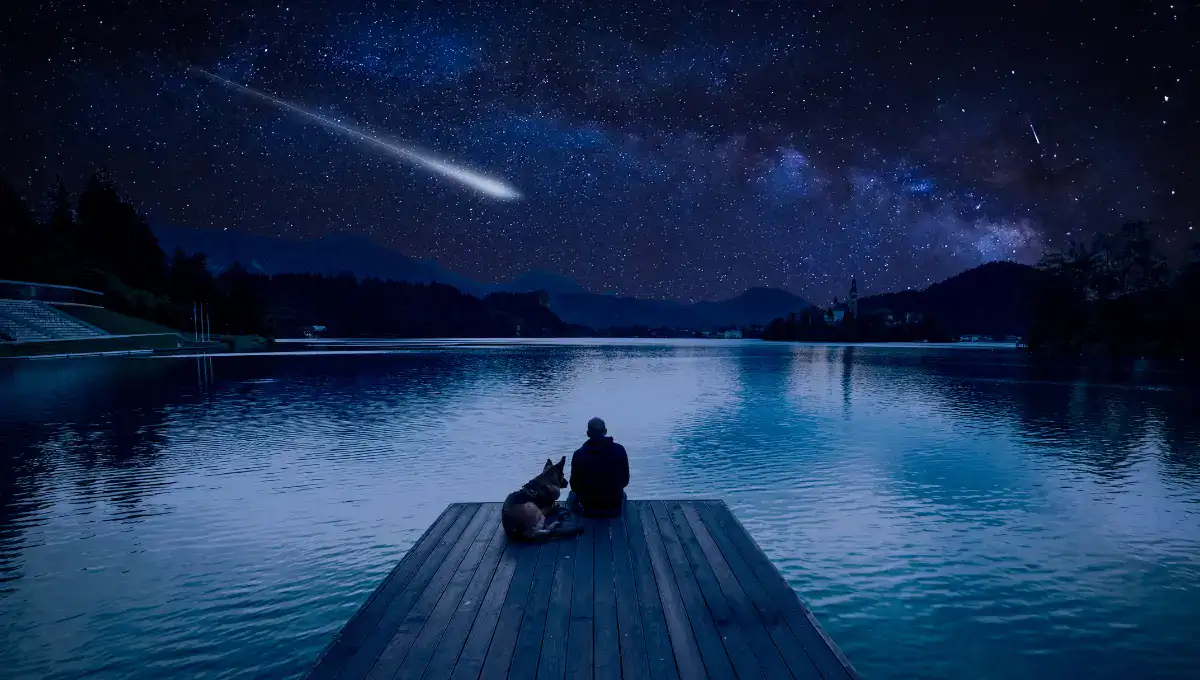August brings a spectacular array of celestial events, including the dazzling Perseids meteor shower, the year’s first supermoon, and captivating planet sightings. Here’s everything you need to know to catch these interstellar marvels.
 Key Dates and Events
Key Dates and Events

Check The below meteor shower in August.
Aug. 4: New Moon
- Best Time for Stargazing: The new moon offers the darkest skies, making it ideal for stargazing. Find a location with low light pollution, such as stargazing hotels, to witness the brightest stars and the Milky Way core.
Aug. 5: Crescent Moon Meets Venus
- Just After Sunset: Look westward to see Venus and the crescent moon close together. Mercury will also be nearby, though it can be challenging to spot, according to stargazing app SkySafari.
Aug. 11-13: Perseid Meteor Shower Peaks
- Peak Viewing: Between midnight and early morning, especially on Aug. 12. The Perseids, near the constellation Perseus, can produce up to 100 meteors per hour in clear, dark skies. Known for bright, colorful fireballs, this meteor shower originates from the comet Swift-Tuttle, according to the American Meteor Society.
Aug. 14: Moon Joins Jupiter
- Early Morning: Mars and Jupiter will be visible together, best seen around 2 a.m. in the east-northeast sky. Use stargazing binoculars for a better view.
Aug. 19: Supermoon
- Around Sunset: The year’s first supermoon will appear larger and brighter. Look towards the east-southeast horizon. This full moon is also called the full sturgeon moon, and it is named for the abundant fish at this time of year, according to the Farmer’s Almanac.
Aug. 27: Moon Meets Mars and Jupiter
- Pre-dawn Hours: The crescent moon will form a pyramid with Mars and Jupiter near the Taurus constellation, with the orange-tinged star Betelgeuse below. The best viewing starts around 2 a.m. and continues until sunrise.
Tips for Optimal Viewing
- Choose a Dark Location: Avoid areas with heavy light pollution to see the celestial events clearly.
- Use Binoculars or a Telescope: For closer planet sightings and detailed views of the moon.
- Check Local Weather: Clear skies are crucial for the best viewing experience.
- Plan Ahead: Arrive early to set up and allow your eyes to adjust to the darkness.
Conclusion
August is a month of celestial wonders, from meteor showers to supermoons. Whether you’re an avid stargazer or a casual observer, these events offer a fantastic opportunity to connect with the night sky. Don’t miss the chance to witness these astronomical spectacles!
Behind the Voice: 7 Things You Didn’t Know About Charlie Kirk’s Personal Life
Emmy Awards 2025 Winners 🏆 Full List Revealed – Shocking Surprises & Big Moments!
Iggy Azalea Rips Into Miami’s $840M Signature Bridge: “It Looks Like McDonald’s Arches!”


